DEAR JEAN-LUC GODARD
|SHUMON BASAR
Jean-Luc Godard reinvented cinema countless times over the course of seven decades. He died on September 13, 2022, at the age of 91. In his eulogy to the director, first published in 032c Issue #42, Shumon Basar charts Godard's historic legacy — and life — in parallel to his own personal timeline, from Northern English teenager to middle-aged melancholic, following Godard's credo, "At the cinema, we do not think; we are thought."
I started thinking about your death more than a decade ago, and now that it’s actually here, I have a lot I need to say. A lifetime worth of things I want to share with you. You see, as a public service, I decided to stop talking about you several years ago. I’ve been “Godardsplaining” people over the course of my life – friends, partners, strangers – with why you’ve been my North Star. It appears my emphatic appreciation, not only toward your work but the way you conducted life, turned me into that most cringe of caricatures: a simp.
You turned 91 years old last December. I’m in my late 40s, just over half your age. I haven’t fared well with middle age. It’s an affront to real crises to call this a crisis. But, over the last few years, I’ve been crying a lot on airplanes, suddenly triggered by a schmaltzy movie dredged up from the inflight entertainment system. It’s all related, it has to be. In contrast, you became more singular, gnomic, and cool the older you grew. Forever an enfant terrible.
Your last film, Le Livre d’image, came out sometime around 2018 or 2019 (depending upon how one measures cinematic release these days). You didn’t turn up at the film’s press conference during the Cannes Film Festival (no surprise), but you did appear via FaceTime (totally a surprise). Cinematographer Fabrice Aragno held up your cropped visage on his iPhone while, in your own words, you fielded journalists’ questions “like machine gun fire.”
The way you were and weren’t there was very Godardian. It caused a stir. Some might even call this a “stunt.” I’d prefer to add that moment to the long list of ways in which you lived and worked on your own inimitable terms. You eschewed expectations. You made eschewing expectations a kind of agitprop performance.
A notable example of this was when you and your Maoist comrade, Jean-Pierre Gorin, made a 53-minute film-essay based on one image: a photograph of Jane Fonda, in Vietnam, published in an issue of L’Express from August 1972. It was taken a few months after you and Gorin had finished working with Fonda on your feature Tout va bien.
You titled this film – which addressed Fonda directly – Letter to Jane.
PREEMPTIVE ELEGY
I’ve been increasingly affected by the deaths of people I don’t always know personally, but whose music, films, or books made me who I think I am. It all started with David Bowie’s death at the beginning of 2016. I was on the 36th floor of a hotel in Dubai, and the news of his passing struck like a queer jolt to my insides. A sudden rupture to time’s steadfast continuity. But two days before he died, on his 69th birthday, Bowie released one of his best albums, Blackstar. It’s achingly self-aware about his time’s end. A last testament.
When a public figure like Bowie dies, I now enact an instinctive ritual (and I can’t be the only one to do so): I go to YouTube and look up their interviews. The further back in time, the better. YouTube maintains every recorded phase of someone’s talking life in digital aspic, undegraded by repeated viewing. Here, you can find cocaine-y Bowie. Berlin-era Bowie. Merry Christmas, Mr. Lawrence Bowie.
Ever since that moment, the act of writing feels most urgent to me just after I hear about someone’s death. That queer jolt asks me to translate the feeling into words.
Architect Adolf Loos once said that only monuments and tombs are architecture; everything else is merely building. Are eulogies and elegies the only writing that should truly be called writing?
Monsieur Godard, I wonder if you ever read Jacques Derrida’s book The Work of Mourning? It collects his letters of condolence, memorial essays, eulogies, and funeral orations to dead friends – most of whom were also philosophers (Althusser, Foucault, Barthes, Deleuze). With each entry there’s a growing melancholy, a mounting sense, akin to a stunned survivor, that the final text – the one which is missing from The Work of Mourning – is the one which will mark Derrida’s own passing someday soon.
Perhaps you know a website called Deathlist.net? The idea is, each year, a committee predicts which famous people are most likely to die. For years, my friend Charles and I agreed the future death that would matter the most to us – beyond our immediate family – would be yours. Forgive this thought, Monsieur Godard, if that sounds morbid. In fact, it’s simply a metric by which to measure your enduring persistence.
Every death is the end of the epoch to which that life lent its vitality. Is this one reason that writers feel compelled to write something? Is writing mourning via celebrating?
I never wanted to wait for you to pass before I took measure of your influence upon me. That’s why I began writing this letter to you several years ago.
Le Livre d’image, your aforementioned last feature, proved to be a significant prompt. It is a kind of prism through which to recall and reassess your own past, the work that belongs to it, and the present moment inhabited by you and by us. Many of the culled clips in Le Livre d’image come from previous films of yours. Intertitles and slogans we’ve seen countless times previously. Déjà vu of déjà vu. The colors, though, here seem to belong to dusk, not morning. The image quality is not 4K HD. It’s frequently oversaturated, degraded. Poor. Did you know that the last color Borges saw, before he went completely blind, was yellow?
It would be presumptuous to call Le Livre d’image a last testament. Many of us hoped you would make many more films, as you hurtled unstoppably toward being a hundred years old. Undeniably, there is a mood, a melancholy whisper that hovers over Le Livre d’image. It radiates vitality from mortality.
Someone once described you as a “radical conservative.” Is that shade, Monsieur Godard? I don’t think so. In fact, I’m going to Godardsplain why I think you were one of the last radicals. Why you’re that “North Star.”
IDEAS IN FEELINGS
When I was 12, my parents – who immigrated to England from Bangladesh 11 years earlier – bought me a 14-inch Toshiba television. South Asians watch a lot of television. To them, unlike well-educated middle-class Europeans, there’s no downside to TV. The Toshiba lived in my bedroom. This box became a portal to everywhere I was not from, everywhere I could not be. It was permanently set to different content than the downstairs, family TV. This was in the mid-to-late 1980s, when two national TV channels would air all kinds of alt, indie, and non-English-speaking cinema. One night – for it was only at night, and often after midnight – I switched on my Toshiba.
There, I saw a French film with subtitles. The male lead insisted, repeatedly, that his name was Ferdinand, even as a female character kept calling him Pierrot. I found the mood prickly and jumpy, with voice-overs about the nature of space and painting. Ferdinand wanted to leave his bourgeois nuclear family to become a Robinson Crusoe-ish poet. Marianne was in trouble with gangsters. She had a deadly bob with an even deadlier fringe. They fled Paris and left a corpse on an unmade bed. They burned their car to fake their deaths.
Monsieur Godard, this film turned out to be your second feature from 1965, Pierrot le fou, starring Jean-Paul Belmondo and your then recently divorced wife, Anna Karina. The film critic David Thomson later described it as “an American film noir, shot in the sunny countryside of Renoir, re-edited by a Soviet montage maniac and then presented as a lecture about itself.” Does that sound reasonable to you?
I’d never seen any film like it. Funny, but tragic. High on art history. Fragmented and meta. A lecture about itself.
Several years later, channeling this unschooled encounter with your work, I wrote my undergraduate dissertation at Cambridge on Pierrot le fou and nearly went fou (mad) myself in the process. Why?
Because once I slowed down the film into its constitutive parts (on VHS, in those days, of course), I noticed that the aleatory surface quality was hiding the following: a mathematically rigorous editing composition; French philosophy from the late 19th century to the mid-20th; Men Are from Mars, Women Are from Venus gender tropes; plus a soupçon of anti-American politics (the Vietnam War was still raging when you filmed).
FERDINAND: Why do you look so sad?
MARIANNE: Because you talk to me with words and I look at you with feelings.
FERDINAND: Conversation with you is impossible. You never have ideas, only feelings.
MARIANNE: But there are ideas in feelings.
I was in my late teens and then early 20s. I guzzled as many of your 1960s films as I could – Vivre sa vie, Alphaville, Masculin féminin, Weekend – and felt my brain make a quantum leap to new frontiers. How could cinema be so agile with thoughts and feelings?
ALWAYS TAKING
In 1998 Ibrahim Hanna – the last native speaker of Mla sô, a Central Neo-Aramaic language – died in Qamishli, Syria, making Mla sô extinct. In another part of the world, I had undergone the bitter failure of my first long-distance relationship, and I was about to join a class taught by film theorist Laura Mulvey.
The latter thing made me giddy. I knew Mulvey’s name from a 1980 book about you, Godard: Images, Sounds, Politics. It was a slim paperback designed by Richard Hollis, who had also designed John Berger’s beloved Ways of Seeing eight years earlier. Inside Images, Sounds, Politics, Mulvey, with Colin MacCabe, presented the essay “Images of Woman, Images of Sexuality,” which charted the depiction of female characters in your films from the 1960s to the then present moment. It had helped make Mulvey one of the foremost feminist interlocutors of your work – never afraid to critique you, but always brave enough to decipher you – and now, she was about to teach a course, inspired by you, called “Death Twenty-four Frames Per Second.” You will recognize the title as one of your infamous aphorisms, whose original incarnation – cinema being “truth twenty- four frames per second” – is better known.
1998 was an important year, because you had just finished your
epic, decade-long project, Histoire(s) du cinéma. I had seen it aired on
a British TV channel earlier in the year, or, at least, fragments of its
eight chapters. Histoire(s) seemed to be organized like a book, but it read like a secretion of paintings, accompanied by sound. It drew a parallel between the history of cinema as the de facto history of the 20th century. That distinct social contract between the masses and the medium. Your voice, growing more granular each decade, came through as an over-literate audio guide to this vast archive of film, history, philosophy, and politics, shaped for the small screen.
In an interview with Colin MacCabe, you admitted, “I’m always taking; I never invent.” Histoire(s) cascaded through clips culled from cinema’s good and evil. The whole thing moved forward via delirious montage. It would be too easy to call this result dream-like, though, nowadays, the effects bear a strange resemblance to the images of Google’s artificial intelligence dreaming about itself.
Perhaps when the 20th century dreamt about itself, Histoire(s) du cinéma was the texture of that dream: iridescent; like burning celluloid; that white light from Hiroshima; the diabolical heat inside Auschwitz’s genocidal ovens.
Soon after, Histoire(s) du cinéma proliferated in satellite forms: a multivolume book published by Gallimard (thus enshrining you as a novelist alongside Céline, Camus, and Beckett) and a CD released by ECM (placing you in the company of Keith Jarrett, Arvo Pärt, and Steve Reich). Once again, you invented new languages.
I submitted my long essay on Histoire(s) du cinéma to Mulvey. I recall using a phrase – “the plan of cinema” – a lot. (Although today, I’m not entirely sure what I meant by that. Youth is full of promising dead ends.) I was convinced I had written something quite brilliant and original. Sadly, Mulvey’s appraisal was lukewarm to my fanboy ears. There is every chance I misunderstood you completely.
INDOOR SMOKER
You and I never met. But I did walk past you once, in the British Film Institute (BFI), and the memory is as tactile as it is brief. During the summer of 2001, the BFI set aside two months to screen your entire output. You had come to give a talk after a showing of one of your films. I don’t remember which, but I remember shuffling along the corridor to the theater entrance, and you were just standing there, in one of the side doors, cigar insouciantly in mouth. You could have been like any of us. A ticket holder, waiting to get inside and hear you speak in comforting riddles.
There are many clichés about meeting one’s heroes. I wonder what it was
like when you first met Fritz Lang, or Samuel Fuller, or ... did you ever meet Hitchcock? I wonder: did they impress you? Annoy you? Did you annoy them? As I said, Monsieur Godard, there is something uncanny about this moment when I walked past you in that cramped corridor. Many years later, a story would go around on the internet about how you and your partner, Anne-Marie Miéville, were caught on Google Street View. This, too, will make people feel uncanny – or make them lightly LOL – for reasons, I suspect, having to do with the continued enigma of you in an age of automated, lascivious publicity. Pas mal.
PROTEST TO THRIVE
I spent most of the summer of 2001 at the BFI. As you know more than anyone else, Monsieur Godard, trying to watch the bulk of the things you made between 1968 and the late 1980s is almost impossible. There’s niche, and then, there’s you. So, I took that rare opportunity and waded through your wayward output.
The Dziga Vertov period, circa 1968, when you disavowed your brand-like name and learned to “make film politically” together with your collaborator Jean-Pierre Gorin.
The video and television period, from 1974, when the collaboration with Miéville turned your attention to the politics of homes and families, the near and the far.
Then, the “return to cinema” in 1980, with output that includes Sauve qui peut (la vie), Prénom Carmen, Passion, and Je vous salue, Marie: archetypal stories all told atypically.
These periods point to your Bowie-like capacity for rebirth and renunciation (often followed by renunciation of the previous renunciation). I tend to valorize this restlessness and reinvention. In fact, the very first seminar I ever taught (while I was still a student) was titled “Restless Geographies.” Here, I started with the final scene from Pierrot le fou – where Ferdinand blows himself up, and immediately regrets doing so.
Each part of one’s earlier life becomes the latent basis of a question that will be asked later in life. Once Oedipal sacrifice is out of the way, the only thing left to symbolically kill is oneself, so that the next, truer version of “I” can thrive.
WE ARE THOUGHT
During that summer, a megaconference called For Ever Godard was also held at the BFI. Contemporaries of yours, as well as members of a younger generation of academics – each with a PhD on some micro-specific Godard niche – spoke about your oeuvre. As with any academic conference – and I imagine you avoid them like the proverbial peste – the debates were often excruciatingly esoteric.
But still. The question remains: has any other filmmaker been the cause of so much theoretical flexing? I am bad at stats, and there’s probably a search engine that could answer me in hard data terms. Let’s say it’s more of a feeling, a keen observation, about the kinds of writing your films elicit. So much beyond mere “film appreciation” or “film history.”
And it isn’t just the sheer volume of writing excrescence, it’s the caliber of thinkers – for example, Gilles Deleuze and Serge Daney – who, through listening to your sounds and watching your images, refract new thought. This result can’t be an accident, can it? Already in the 1960s, during the height of your popular fame, you said, “At the cinema, we do not think; we are thought.”
LATE DRIFT
In 2003 Colin MacCabe’s biography of you arrived. It was meant to coincide with your 70th birthday, in the year 2000, but biographies are slow and unwieldy and do not always bend to deadlines. I got hold of a copy quickly. I decided I would write a review. There, I say:
Both the book’s author [MacCabe] and subject [Godard] are acutely weary of the biography as a genre: “I put the idea to Godard,” says Mac- Cabe. “He seemed to concur with my dislike of biography as a form and to share my doubts about the pleasure of the process .... By the early nineties it was clear that Godard no longer had any faith in the project.”
By portraying your older self as yourself in your late films, you have been acting as your own quasi-biographer. Reliably, unreliably. Self-parodically. My review of MacCabe’s book continues:
Though Godard is ostensibly the subject of this book, the true truth may actually be found in Élie Faure’s description of [the painter] Velázquez that is found at the start of Pierrot le fou: “After he had reached the age of fifty, Velázquez no longer painted anything concrete and precise ... he drifted through the material world, penetrating it, as the air and the dusk .... Space reigned supreme.”
Does it also make you cringe, Monsieur Godard, that autobiography has become the default genre through which people present themselves today? The publishing term autofiction pretends there’s something novel in this pursuit. But then I remember when you said that “just to do something I need to be more than one ... the only aim of a self is to be two.”
COUPLE FORMAT
I forever found your depiction of the romantic-intellectual couple a kind of ready-made truth. The unity of opposites: Ferdinand (the Poet) and Marianne (the Criminal) from Pierrot le fou. Paul (the Playwright) and Camille (the Wife) in Le Mépris. Every love story, a struggle. The byproduct, beauty.
In his 2011 biography of you, Everything Is Cinema, Richard Brody recalls the tear shed by Anna Karina at the end of Alphaville (1965) when her character, Natasha, mouths the illegal words “I ... love ... you” directly to the camera. You and Karina had just finalized your divorce. To know this detail makes these tender, frail words – uttered as if for the first time in the human world – mean something else. I, too, have seen my marriage end recently. Perhaps we all ought to take another one of your pronouncements more seriously – the one wherein you warn, “I always feel a man and a woman who do like the same films will eventually divorce.”
I hope you would agree with me that the word muse ought to be illegal. Formidable women reduced to optic stimuli for “genius” men. This myth has muted women’s autonomous intelligence throughout time. I mention it because there’s an alternative way to timeline your output: according to the women you were with. The Anna Karina years (1960–66). The Anne Wiazemsky years (1966–70). The Anne-Marie Miéville years (1970–present). Lazy historians may call them your “muses.”
Then it dawned on me that you were not only depicting the male–female
unit in your films, but you were also practicing it. “Work is the result of love,” you said, “and love is the result of work.”
It’s your five-decade-long relationship with Miéville (my parents have been married for a similar duration) that I want to consider for a moment. I believe you met each other when Miéville was working for a pro-Palestinian bookshop. She supported you after your major motorcycle accident in 1971. The two of you left Paris and headed to Grenoble, and after that, in 1977, set up your studio-home in Rolle, Switzerland, by Lake Geneva. Rolle is where the Google Street View camera captured you both on the sidewalk, a couple like any other.
Serious PhDs have been written about Miéville’s role in your continued collaboration, as well as her own solo work as a director. I cannot do justice to the complex, knotted ways in which she has influenced you (relationships are ultimately mysterious, even unto themselves). But there are two evident measures that shifted cinema.
There’s the appearance of audiovisual technology within the shot, becoming the story itself. From Numéro deux in 1975 and onward, you and Miéville showed us the mechanics of film, video, and television: steam decks, mixers, monitors. As these films evolve into explicit essays, your reflexive tone is mirrored by the reflexive imagery of production. Medium, message. Now that we can watch these on our palm-affixed phones – in repose, on a hot date – it’s like wandering inside a museum of obsolete technology, when bodies were still mostly physical things, and machines were, too.
Then there’s the way you and Miéville invited us into your home, to sit next to you on the sofa, and hear you discuss soft and hard topics before the day’s ironing was finished (the ironing always needs to be finished). Twentieth-century capitalism has, at its heart, the heteronormative tools of marriage and mortgage. In your auto-fictional films, this innermost space of intimacy is the most political space of all. “They strove to live out a working practice in which the divisions of labour and of the sexes were dissolved,” wrote Michael Witt about your collaboration with Miéville in the 1970s. He said you were “finding pleasure in ... work whilst collaborating with a partner one loves.” For those of us allergic to offices, it is inspiring to see how the two of you made love work, and you worked at it at home.
FORMAT LIFE
Let me also salute you for growing ever older without softening into what the British call a “national treasure.” It’s the equivalent of becoming the culture’s cozy grand-parent. This fate greets almost every onetime radical (priapic rock star, LSD addict, pornographic actress) if they survive past 70 years of age. My skin curdles at such a sad surrender.
However, Monsieur Godard, you have upended octogenarian expectations: your output did not mellow with the passing of time. It did the opposite. Each film embraced contemporary technology by experimenting with new kinds of sounds and images – in ways that even “young” filmmakers don’t try.
I still recall first seeing the discotheque scene in 2010’s Film Socialisme: blaring Eurotrance saturated your consumer-grade microphones. (I hear that you did not take a sound engineer onto the cruise ship Costa Concordia). Such seething dissonance is the deafening end of nuance, the end of Europe. Green light, blue light, yellow light strobe, a fit of flashes, senses working out of time. And somewhere else on board, was the philosopher Alain Badiou able to sleep through all this?
After that, in Adieu au langage from 2014, you gave us double exposures and painterly primary colors crafted in handmade 3D. What your cinematographer Fabrice Aragno calls “defects over quality.” I find it amusing that the world had to wait for an 84-year-old auteur to showcase the true depth of 3D – which usually, in most large-budget studio productions, is merely a gimmicky surface effect.
Would you agree with me that Samuel Beckett’s prose became sparer toward the end of his life? That Scott Walker’s music increasingly tilted toward the abstract? Like Beckett and Walker, your examination of what form can do grew with age. You always set your own terms. Even if those terms are, for the average uninitiated viewer, frustratingly difficult. And is it not the case, Monsieur Godard, that “difficulty” now has a really bad antisocial rap?
This reminds me of when you wrote to your friend Daniel Cohn-Bendit, “Bachelard says there are two kinds of images: the explicit image, and the implicit image. I try to make an implicit image. It can’t be made consciously.”
Lately, I’ve been thinking about modern art’s “opacity.” The way abstract pictures in the 20th century – and then conceptual objects that came afterward – elicited enormous amounts of words around them. An industry of interpretation flourished because of difficulty. One could say that the more opaque a cultural product is – in terms of communicating why it’s in the world – the greater the scope to imagine meaning. As you have said before, “Most people have the courage to live their lives, but not to imagine them.”
Le Livre d’image may well be opaque or difficult to eyes that haven’t been trained on your “implicit” images the way many of us have. I wonder if you and Anne-Marie had a Netflix account. Disney+? Did you VPN stream? I read that Martin Scorsese has urged viewers not to watch his feature The Irishman (produced by Netflix) on their phones. At the very least, Marty implores, please use an iPad.Today, the most energetic, innovative filmmaking is produced and distributed on TikTok. Absurd dislocations of continuity and ham-fisted jump-cuts abound. Each one of these silly-surreal crash-edits is a great-great-grandchild of what you introduced in À bout de souffle.
JOYFUL ARABIA
After chapters about image and speech, ISIS and war, trains and history, more than half of Le Livre d’image is taken up with the Middle East, or what you call in the film “the Central Area” or “Joyful Arabia.” You describe a fictional Gulf city, “Dofa” – which might be a typo for Doha – that is blessed (or cursed) with no oil and a people’s revolution that fails. You say in the voice-over that “The world is not interested in Arabs. Muslims neither.” You ask, “Can the Arabs speak?” as images of over-familiar Orientalism are countered by clips from Youssef Chahine’s 1958 classic feature Jamila, the Algerian.
Le Livre d’image circles back to Ici et ailleurs, made in 1974, the first film to be associated with your name after your activist collective, the Dziga Vertov Group, disbanded. It was also your first collaboration with Miéville.
Ici et ailleurs took place between “here” and “elsewhere.” Palestine was that “elsewhere” in a film made with footage from Jusqu’à la victoire, a documentary abandoned by you and Jean-Pierre Gorin. In 1970 you wrote:
Demonstrate the fedayeen’s struggle to their Arab brothers who are being exploited by the bosses in the French factories. Show Fatah’s militiawomen to their sisters [among] the Black Panthers who are being chased by the FBI. Make a film politically. Show it politically. Distribute it politically. It’s long and hard.
I feel that Ici et ailleurs became newly relevant to a generation of contemporary artists invested in the essay film: Hito Steyerl, the Otolith Group, and Lawrence Abu Hamdan, to name a few. They, too, reflect – reflexively – on how the technology of image-making contributes to the making of politics and place. (Your steadfast commitment to the Palestinian people, and their struggle against Occupation, has alone earned you the heartfelt love and admiration of everyone who shares that conviction. I want to thank you explicitly for it.)
HEY ORPHEUS
Then, at the end of 2019, the Fondazione Prada in Milan announced that it had acquired Le Studio d’Orphée, which was your atelier, recording and editing studio, and dwelling/workplace relocated from your house in Rolle. It is also the environment in which your last three feature films were conceived and realized.
You probably know that the Fondazione’s premises originally were home to a distillery, and the room they’ve given over to Le Studio d’Orphée used to be an apartment within the complex. Your domestic space has found a suitable home. Love and work on display as a work of autobiographical installation art.
I spent time alone here one sun-struck afternoon. It’s a cosmos as interior: a Franz Kaf ka portrait, lamps and rugs, sofas and tables, a miscellany of paintings, a framed poster of L’Avventura (eBay would tag it as vintage), and late 20th-century AV equipment. Then, there are the books: Malraux, Faure, Langlois, Blanchard’s L’Invention de l’Orient, Céline, and Miéville’s very own Images en parole. Here is a library as cosmos.
Each day, at 5pm, Le Livre d’image is shown to a tiny audience of five visitors in Le Studio d’Orphée. Not via a projector, beamed large on a wall, but on a television, with which you may well have edited parts of Le Livre d’image.
This television screen is the vanishing point of the room’s perspective: where everything else inside Le Studio d’Orphée converges – and turns into Le Livre d’image. But, to me, Jean-Luc, this television is something else, or, more truthfully, somewhere else.
Standing in front of it, I could see into the screen, which was not some shallow surface but an extensive deep. Thirty years deep. At the end of this telescoping tunnel was a face: mine, age 15, watching Pierrot le fou for the first time, late at night on my 14-inch Toshiba, in a British coastal town I was hoping to escape. Back then, I did not feel brown and Bangladeshi. I felt hormonal and out of place. I craved intellectual adventure, impractical fashion, and opaque beauty. Like every brown kid who chose not to follow in their father’s footsteps to become a doctor, but instead to seek a life where thinking could be equated with work, and work with love, I craved direction.
Le Studio d’Orphée may be a kind of resting place for one of your most restless films. But for me, it’s also the terminus of my own past.
FIN
I’m listening to Georges Delerue’s heartbreaking soundtrack for Le Mépris on loop and watching glitchy footage of you on Instagram Live, from early in the Covid-19 pandemic. In the footage, you use an iPhone to check whether your hair is in place; in the comments, viewers worried about your being exposed to this deadly new virus via an interviewer and cameraman who were let into your home. He’s an anti-national treasure! I thought to myself. Protect him at all costs! But you survived, and now, more recently, you actively chose not to survive any longer; instead, once again, in exacting charge of how a story – your story – ends.
I want to say, with all the force of unabashed, cringey conviction, that I would not be the person I am today were it not for you, JLG.
With lifelong appreciation and affection,
SHUMON BASAR
Jean-Luc Godard, born December 3, 1930, died September 13, 2022
Credits
- Text: SHUMON BASAR
Related Content
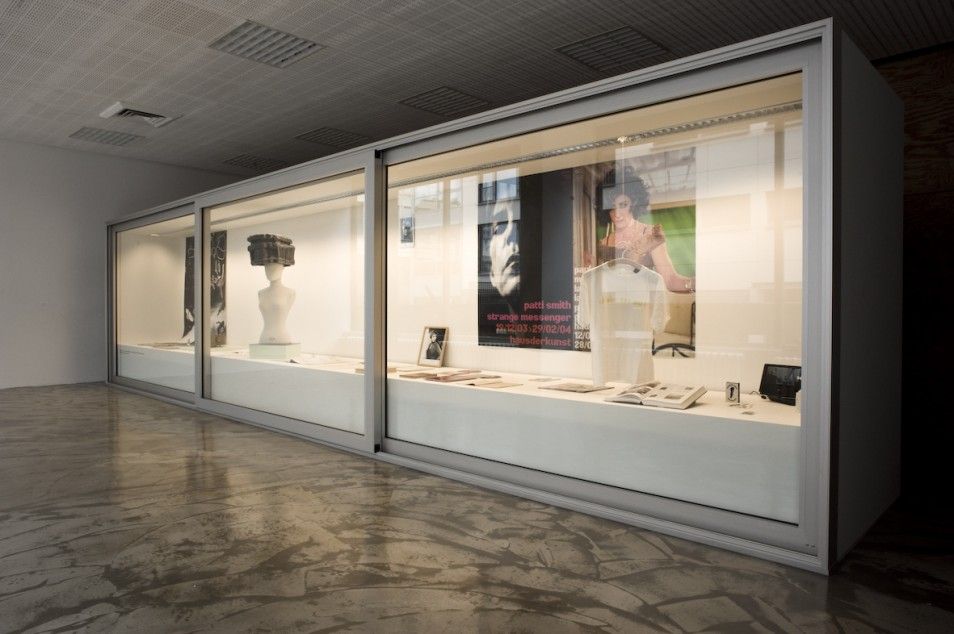
“Ridiculously Modest” by Chris Dercon
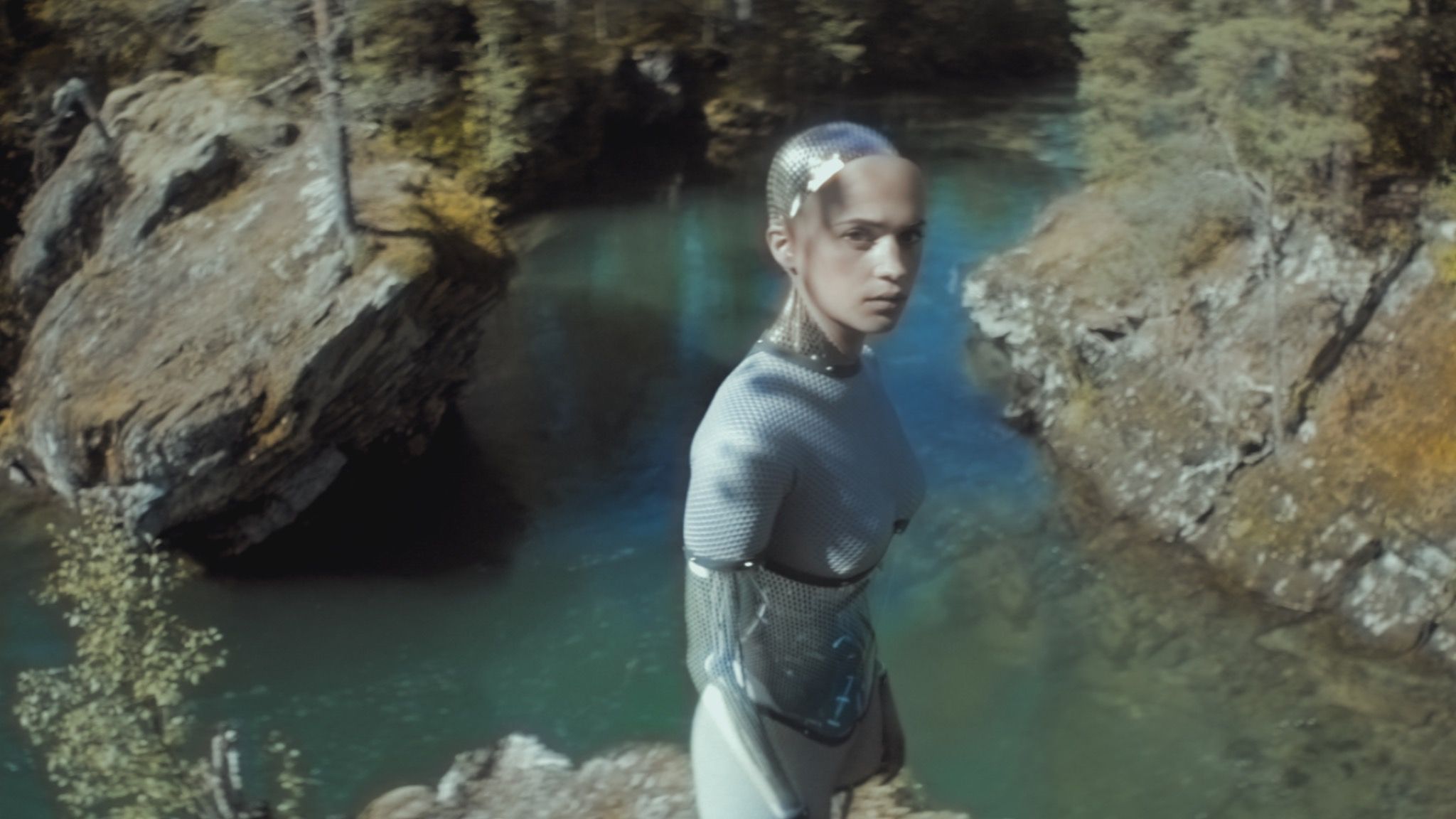
Shimmering, Twisted, Tangible: Meet the Sci Fi Cinematographer Behind Ex Machina

“Punk Metal, Babes”: ENRIQUE AGUDO Explores Identity, Sexuality, and Mythology in VR for a Digitized Tribeca Film Festival
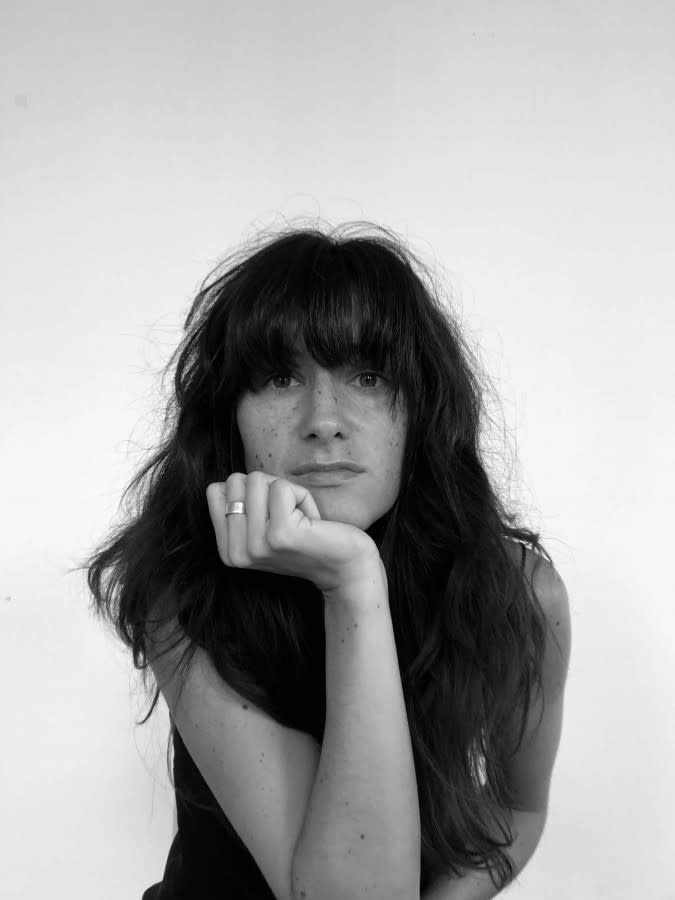
Maintenance of Curiosity: OANA STĂNESCU
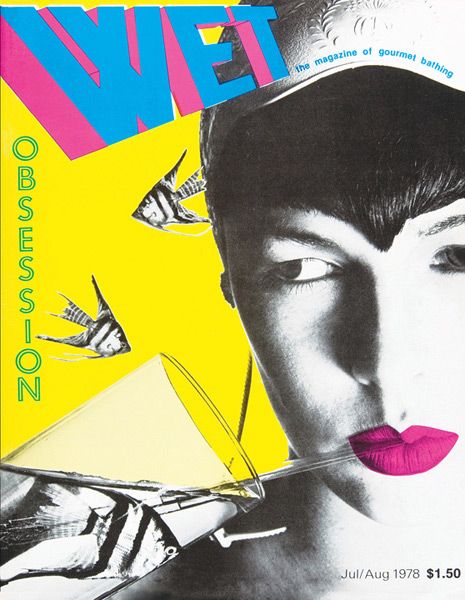
WET: How the 70s California New Wave Gourmet Bathing Magazine Turns up in Berlin
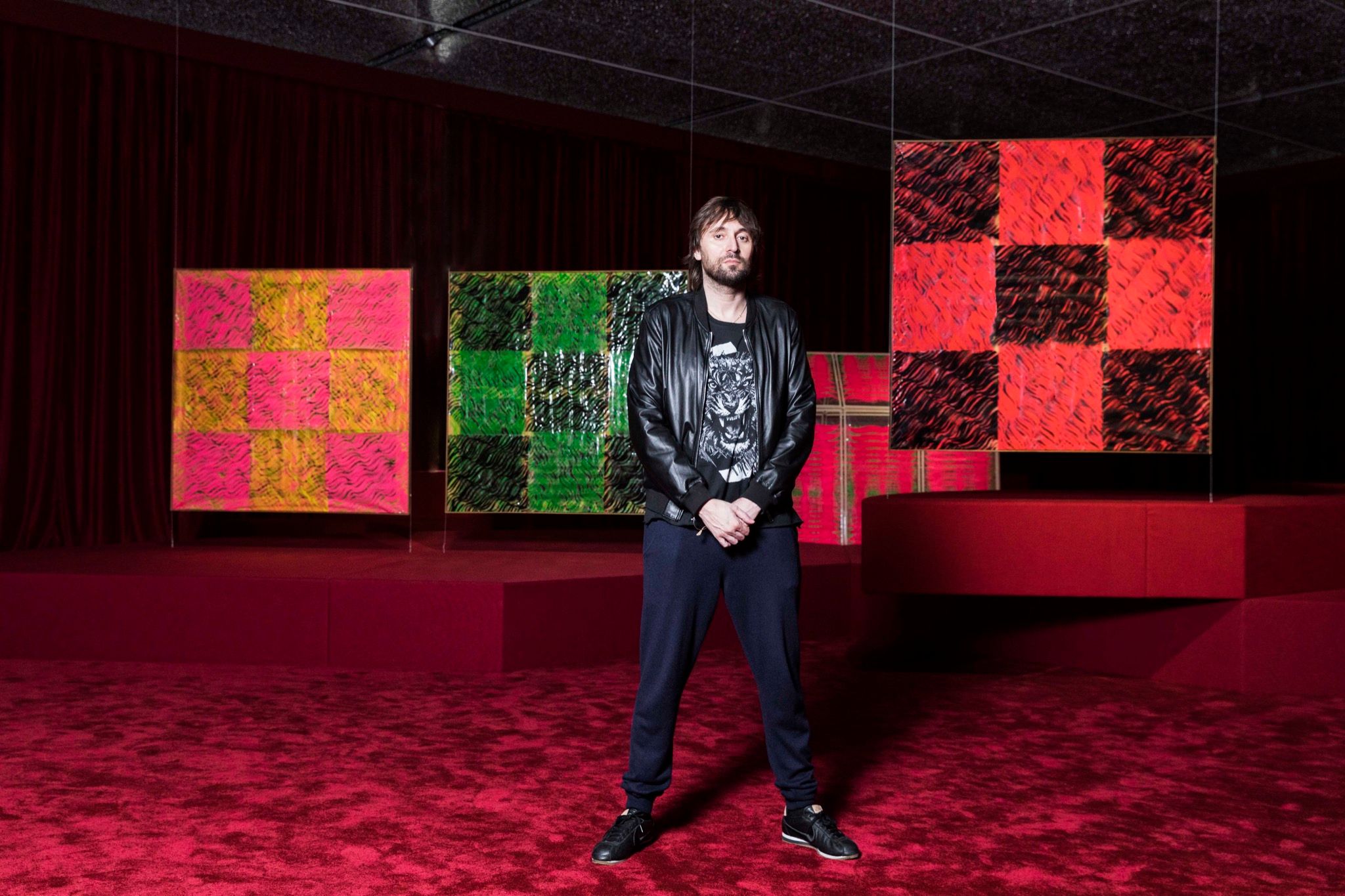
LOVE! INSTAGRAM! COMPASSION! Between an Ipanema bikini and an over-decorated cake, FRANCESCO VEZZOLI's Love Stories
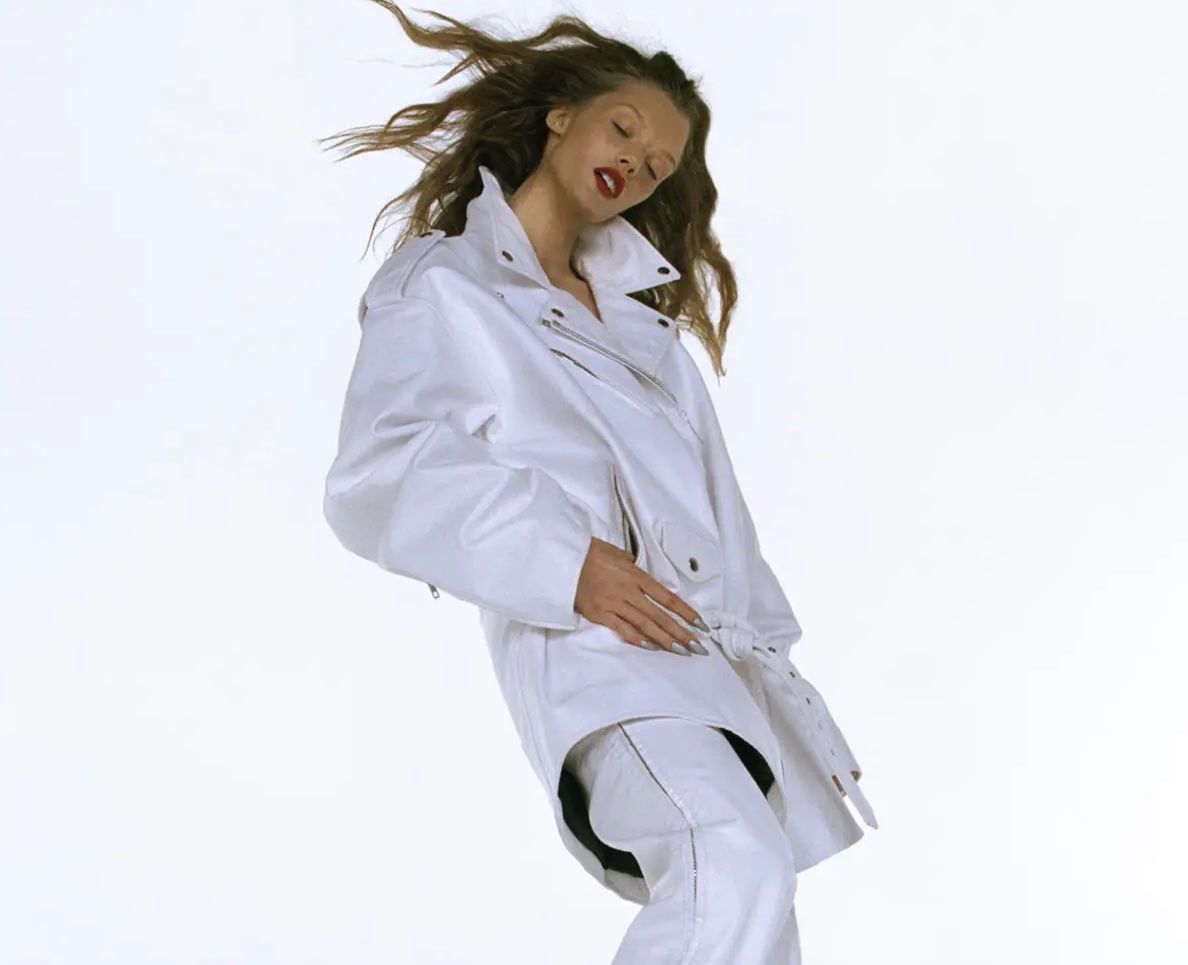
Archetypes, Atmosphere, Attitude: HUGO COMTE Shoots KRIS GRIKAITE for 032c
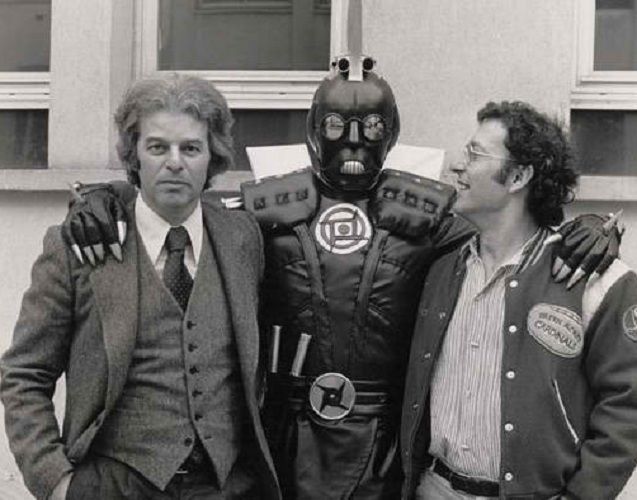
ALEJANDRO JODOROWSKY’s DUNE is the Most Influential Movie Never Made